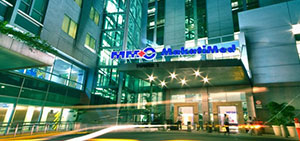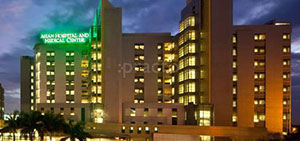Ovarian Freezing
1.Ovarian freezing sounds like a new technology. How long ago was this procedure discovered and how did it develop?
Cryopreservation is freezing tissue or cells in order to preserve it for the future. The technique of cryopreservation in reproductive medicine started with sperm freezing way back in 1953 followed by freezing of embryos in 1958. In 1986, the world’s first pregnancy using frozen eggs was reported by Dr Christopher Chen of Singapore. At that time, the fertilization rate of frozen eggs was much lower than freshly harvested eggs .
However, Lilia Kukeshova led the research in vitrification , a method of rapid freezing to avoid crystallization of the water . Crystal formation in the egg will lead to cell damage so it is best avoided with this technique.
Her expertise in cryobiology, cryotechnology, processing, cryopreservation and banking of donor tissue and organs led to the world’s first live-birth from vitrified oocytes in 1999.
The first ovarian transplant with cryopreserved ovarian tissue was performed by Dr Kutluk Oktay in 1999. In Sept 2004 Prof Donnez of Louvain in Belgium reported the first successful birth from slow, or controlled rate, frozen ovarian tissue.
**Please note that ovarian cryopreservation is still considered experimental in the Philippines .
2. Is it available here in the Philippines or other parts of Asia? How much does it cost? Is it safe?
We have six IVF labs currently in the Philippines all offering egg cryopreservation (aside from sperm and embryo cryopreservation ):
- Center for Advanced Reproductive Medicine and Infertility (CARMI) at the Ground floor , MAB, St Luke’s Global City
- Kato Repro Biotech Center, 8th floor Tower 1 , The Enterprise Center, 6766 Ayala Ave cor Paseo de Roxas Makati
- Victory A.R.T Laboratory, Inc. at Unit D-3 Medical Plaza, Amorsolo cor De la Rosa, Makati
- Center for Reproductive Medicine (CRM) at the 11th Floor Raffles Corporate Center, Emerald Avenue, Ortigas Centre, Pasig City
- Repro Optima Center for Reprodictive Health , Inc in Ground Floor JRDC Building, Osmeña Blvd.,Capitol Site, Cebu City
- IVF Davao,Inc. at Groundfloor of Brokenshire Hospital, Madapo Heights, Davao City.
Although all six IVF labs are capable of doing egg freezing , not all are experienced with ovarian tissue freezing. Only CARMI in St Luke’s Global City has done the only three cases in the country . One case was done on a 22 year old with breast cancer, whose ovaries were preserved prior to chemotherapy . The other case was on a 34 year old with cervical cancer prior to irradiation . The third cases was on a female with Hodgkin’s lymphoma where chemotherapy needed to be done right away.
Repro Optima and Kato Repro Biotech Center both have the technical capability for ovarian freezing but have no case yet so far. The Center for Reproductive Medicine, Victory Lab and IVF Davao, Inc. are still gearing up to make ovarian freezing available in the near future .
The ovaries can be removed prior to removal of the pelvic organs if the patient is already for total hysterectomy with removal of both fallopian tubes and ovaries . If the patient is for ovarian transposition to move the ovaries away from getting directly hit by radiation in the course of cancer treatment , the outer layer of the ovary or cortex can be harvested prior. A laparoscopy may also be performed solely to harvest the uterus so the risks are related to anesthesia and skill of the surgeon. It is a fertility preserving procedure where the benefits outweigh the risks .
Having said that, there is a possibility that in leukemia patients , they may harbor some cancerous cells in the ovarian blood vessels, they might cause a recurrence when the frozen ovarian tissue is reimplanted . Therefore, harvesting ovarian tissue after the first remission and before bone marrow transplant may decrease the risk of transmission from the thawed ovarian tissue .
3. In layman’s terms, please describe the step-by-step process.
A. Specimen Retrieval
Retrieval of ovarian cortex or ovarian tissue by laparoscopy is the most common method of tissue extraction. Whole ovaries removal may also be done during an open surgery if this is the surgery of choice. Once the ovarian cortical tissue is obtained, it is transferred to the laboratory on ice and cut into small slivers of tissue that are typically 0.3–2 mm thick and then cryopreserved.
B. Cryopreservation
There are two methods of cryopreservation: slow freezing and vitrification. The classic standard for the cryopreservation of ovarian tissue has been slow freezing. However, the vitrification method has gained popularity recently owing to good results obtained with vitrification of oocytes and embryos . Slow freezing refers to the exposure of the tissue to cryoprotectant and cooling the tissue slowly in a programmable fashion to approximately 140 C, after which time the tissue is put into liquid nitrogen at 196 C storage . Vitrification of ovarian tissue is a rapid method of cryopreservation developed to eliminate the risk of ice crystal formation in ovarian tissue. Vitrification differs from the slow-freezing method in the concentration of the cryoprotectant (high) and the rate of cooling (fast, within minutes) .
C. Ovarian Transplantation
Once the patient is ready for transplant of the tissue , there are several ways to transplant the frozen ovarian tissue back . Ovarian cortical tissue transplantation has been applied successfully which resulted in the ovarian function being restored, including getting pregnant and spontaneous production of hormones .
Autotransplantation involves attaching viable cortical ovarian tissue into a site within the pelvis (ORTHOTOPIC) site or into an extrapelvic (HETEROTOPIC ) site such as the forearm or the abdominal wall . Orthotopic transplantation of ovarian tissue involves trans- plantation of very thin, <1.0–1.5 mm, strips of ovarian tissue and attaching them to a portion of the remaining ovary or the lining of the ovarian fossa. The advantage of this technique is that the patient can possibly conceive naturally since the ovarian tissue is in close proximity to the fallopian tube, and in a favorable environment for development of an egg follicle. Disadvantages include limitation of the number of fragments transplanted due to the size of the regiments and the fact that it is an invasive surgical procedure. Resumption of normal ovulatory menstrual cycles has been reported to occur within 4–9 months after transplantation, which is consistent with the time necessary to initiate follicular growth and final maturation .
Donnez reported in 2014 reported that 40 pregnancies have occurred from orthotopic transplants ;
Heterotopic transplantation of cortical ovarian tissue been performed in the forearm, abdominal wall, and chest wall and has been associated with reports of restoration of ovarian function and follicular development. With this option, pregnancy can be achieved only with the use of oocyte retrieval and IVF because spontaneous pregnancy cannot be possible .There have been no live births reported with this technique. Potential advantages of heterotopic ovarian tissue transplantation include the beneficial effect of being able to place the grafts in a location that allows for easy follicular monitoring and oocyte retrieval for potential IVF as well as monitoring for recurrent cancer. Disadvantages include compromised viability of the grafts because the heterotopic sites are less likely to undergo formation of new blood vessels and maturation of the egg follicle because the temperature and humidity whole exposed to the outside differs from being inside the abdominal cavity. It is also a less cosmetically appealing location for the ovary regarding follicular development, and IVF being required for pregnancy to occur.
4. How effective is it compared to freezing just your eggs?
Pregnancy with frozen eggs is more common and way over a thousand babies worldwide have been delivered from frozen and thawed eggs .
Much less babies that have been delivered through frozen ovarian tissue and many issues need to be settled because it becomes more mainstream .
5. What are the criteria to be a suitable candidate for this procedure?
- In patients with an aggressive malignancy who need immediate treatment, there may be insufficient time to allow the patient to undergo ovulation induction, oocyte retrieval, and cryopreservation of oocytes and/or embryos , so ovarian preservation may be the only choice to preserve fertility .
- In young girls who are prepubertal or in women who have hormone-sensitive malignancies ovarian tissue cryopreservation is the only option available for fertility preservation.
- In women who require hematopoietic stem cell transplantation for the treatment of benign hema- tologic diseases (sickle cell anemia, thalassemia major, aplastic anemia) and women who have autoimmune dis- eases that did not respond to immunosuppressive therapy may opt for prophylactic cryopreservation if ovarian tissue.
- In patients with genetic mutations that pose a high risk for premature ovarian failure and who are not able to pursue conventional fertility sparing procedures
It is not to be offered to a woman who desires to delay childbearing, who has a benign condition like ovarian cysts that can be best managed with fertility-sparing surgery .
6. What are the precautions and risks?
There are risks inherent to undergoing the surgery as well as anesthetic risks since it needs to be done under anesthesia . The other unknown risk is the possibility of reintroducing a malignancy following transplantation of ovarian cortical tissue. It is currently unknown for most types of cancer. It appears that blood-borne cancers, such as leukemia, carry the highest risk of reintroduction with autotransplantation.
Furthermore, the safety and efficacy of transplanting ovarian tissue removed from children and adolescents is also not known . Therefore, these techniques are still considered experimental .
7. As an obstetrician, have you done this procedure on your patients? Were they successful?
Only three cases in the country have been performed , two by Dr Conception Ilao, and the most recent one by Dr Delfin Tan, both Reproductive endocrinologists of St Lukes Medical Center. The ovarian tissue is currently still cryopreserved in the CARMI lab under the team of CARMI Head, Dr Joy Novero. No attempt at transplantation, nor attempt at pregnancy has been initiated yet to this day.
8. What are the other ways women can prolong and preserve their fertility?
A. Eat well and avoid toxins.
It is essential to eat a balanced diet and supplement with vitamins (esp folic acid ) , minerals and antioxidants and sleep adequately to insure the body repairs itself . There are 88,000 chemicals that have found their way into our food chain. Toxic chemicals like pesticides , dioxins, pthalates, PCB, PVC from plastic products can produce free radical damage to the ovaries affect our fertility . Some vaccines have been linked to premature ovarian failure. Regular, exposure over a prolonged period of time to certain chemicals used regularly like those by salon, dry cleaning and dental professionals may also impact your fertility .
B. Stop the vice.
Smoking is one of the worst habits in terms of your long-term fertility, as it slowly destroys the eggs, according to the Mayo Clinic. It also depletes your body of zinc, and it may contribute to early menopause . Alcohol and substance abuse can also alter nutritional habits and may eventually age your ovaries rapidly , impacting your fertility .
C. Check for STDs
It’s important to get tested for STDs because Chlamydia and Gonorrhea can be silent diseases with no symptoms in 80% of women and 50% of men, but can cause blockage of the Fallopian tubes and impair fertility.
D. Get off the Night Shift
Hormones in the body follow a circadian rhythm which gets interrupted when you reverse your sleep hours to day. This can create havoc to your hormones and decrease fertility .
It is best to eat natural food, devoid of chemicals and preservatives, avoid stress and not delay childbirth too long . Peak fertility occurs at 25 years old and after that, the eggs become less fertile because the eggs we have are the eggs you were born with . So if you are 35 years old, you have expose your eggs to 35 years of environmental toxicity . Fertility preserving technology in the form of egg freezing as well as ovarian freezing are available here in the Phil. and it can be very consoling to a woman who has pressing barriers to go for pregnancy but one day desires to become a mother .





